Hmong Pa'ndau at Woodside Church
|
||
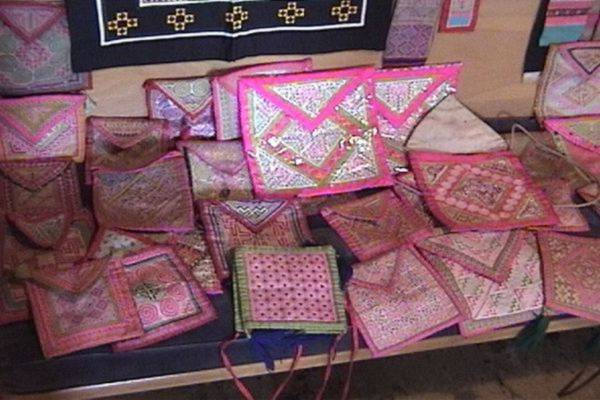 |
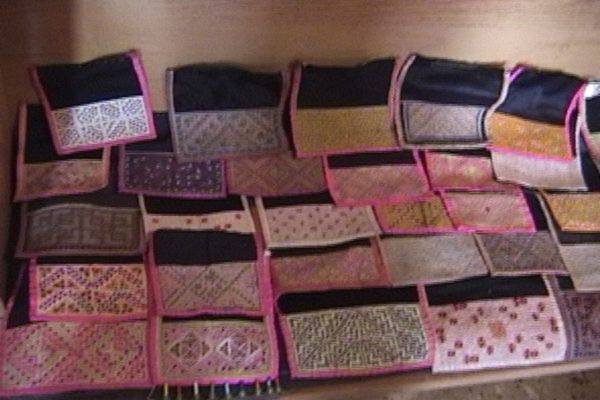 |
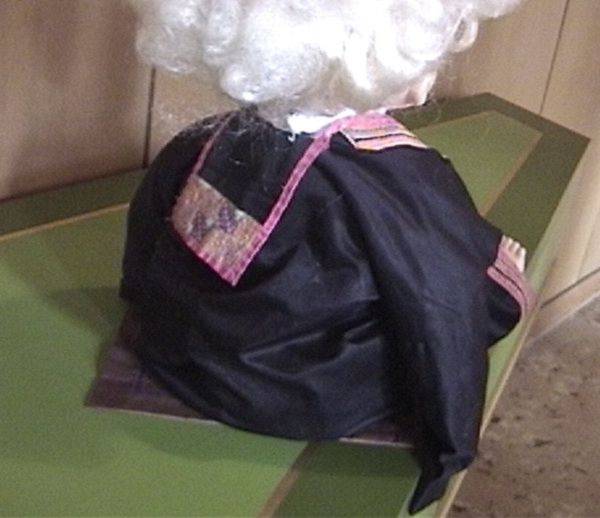 |
| For the past eight years, Flint has been the site of an internationally recognized quilting festival. The 2002 festival, "Quilting at the Crossroads," was spread over eight different locations, including Woodside Church. A few weeks before the event in September, Marsha Woodby, a member of the church (who joined us in Thailand in the winter), invited Dr. Quincy Dobbs, the Art and Music Director of Woodside to look at our Hmong pa'ndau. His reaction was very enthusiastic, but it took us a few moments to understand what he was offering. When we realized that the Woodside exhibit of "Quilts from the Community" would occupy the basement and that he wanted to devote the entire sanctuary to an exhibition of our Hmong collection, we got excited too. |
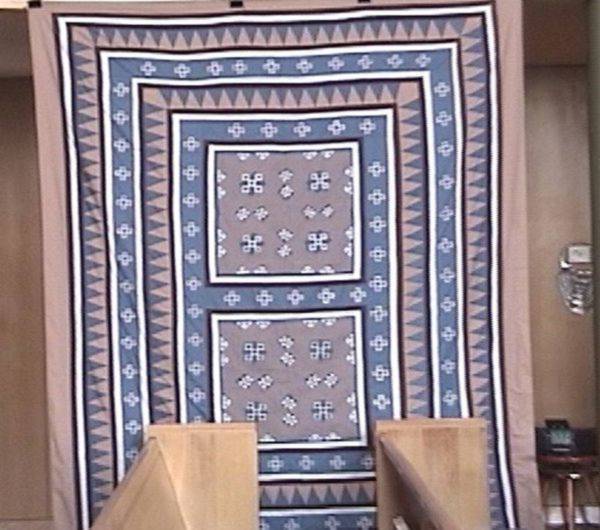 |
|
|
A couple of days before the festival opened, we carried all the pieces, large and small, to the church. We had no idea how many there were because we had never seen them displayed at one time. We began laying out backpieces on the pews lining the side of the sanctuary. We covered the first pew with four rows, but there were many more; after covering a second pew, still more remained. We filled the last pew with the last of the backpieces, fancywork bags, and baby caps. We draped belts over the backs of the pews. The effect was a mosaic of jewel-like embroidery of many colors, dominated by green and pink, the Hmong's favorite colors. At the entrance to this display of the traditional pieces was a life-size doll (with fuzzy blond hair), wearing a Hmong jacket displaying how a backpiece was worn on a basic black jacket. |
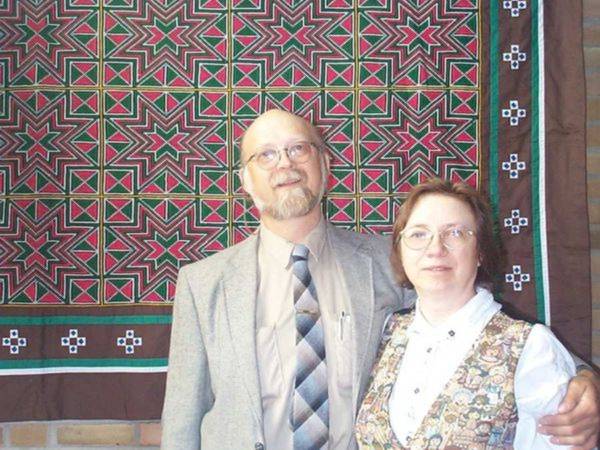 |
|
|
Quincy hung large quilts on the walls. Some were draped from the balcony. Outstanding pieces, including some with embroidered stories between stained glass windows, covered the east wall. Smaller pieces were draped over the pews, lining the center aisle. The steps leading to the chancel displayed pencil cases, belts, and an embroidered sash, and the largest quilt was spread on the floor of the chancel itself. |
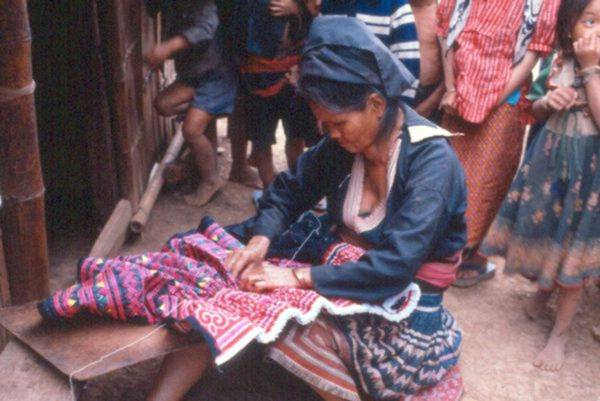 |
|
| The exhibition was splendid. With traditional Hmong music playing softly in the background, we discussed Hmong culture and handicraft with visitors as they walked through the sanctuary. Several people came two or three times to admire the exquisite needlework and the intricacy of Hmong craft. Those who had worked with Hmong refugees resettling in their areas appreciated the depth of our collection. They had seen a few pieces before, but never so many at one time. A few women expressed interest in having us bring some of the pieces to their local quilting clubs for a presentation. Others suggested displaying the collection in a museum. We would also like to revive our slide presentation, "A Place Called Ban Vinai," depicting Hmong life and culture in the camp, which closed in 1992 | 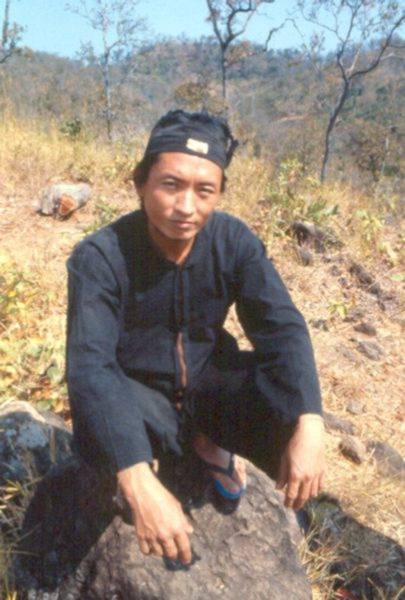 |
|
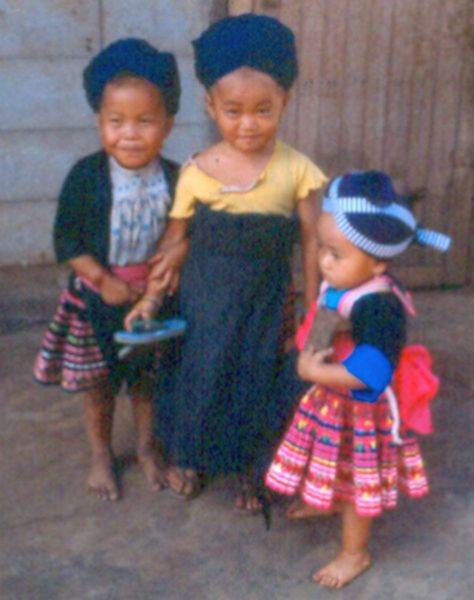 |
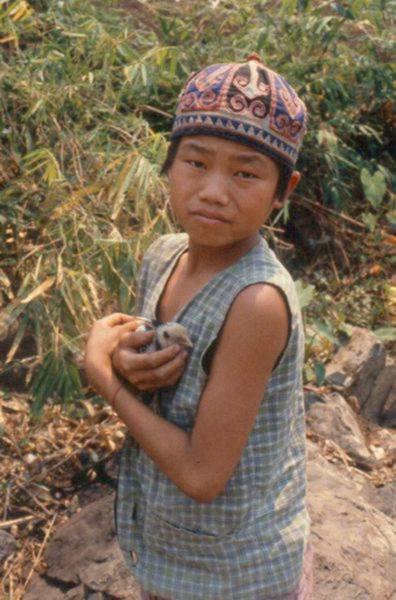 |
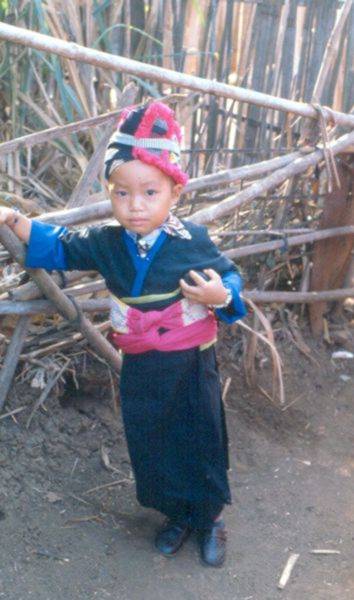 |

